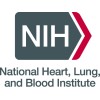
Clinical Feature and Outcome of Angiographic Coronary Artery Disease in Chronic Kidney Disease Patients...
Coronary Artery DiseaseChronic Kidney DiseaseThe prevalence and mortality rate of cardiovascular disease (CVD) in chronic kidney disease (CKD) patients is high. The prevalence of coronary artery disease (CAD) in CKD population ranges from 38 to 65%, with an average of 3.3 coronary lesions per person. The relative risk for death from myocardial infarction and CAD is 1.18 in CKD patients with GFR < 60 ml/min. Because of this high prevalence of CAD and its high mortality, reducing and preventing CAD risk factors is crucial in the clinical management of CKD patients. Low glomerular filtration rate (GFR) constitutes an important independent risk factor for CAD. Several pathogenic factors play role in the genesis of cardiovascular dysfunction in chronic kidney disease. Increased traditional CAD risk factor, endothelial dysfunction, sympathetic hyperactivity, renin-angiotensin system activation, increased glycosylated end products, all contribute to the characteristic medial calcification of cardiovascular disease in CKD patients. Hypertension, fluid overloading and anemia further aggravated the cardiac loading, leading to myocardial hypertrophy with chamber dilatation, heart failure and death. The mortality rate of CAD in CKD patients is extremely high. The NHANES II (National Health and Nutritional Evaluation Survey) found an increased of mortality rate> 51%, when the GFR decreased from > 90 to < 70 ml/min. The 1-year mortality rate in different CKD stage were 0.7% (normal renal function patients), 2.0% (patients with proteinuria), 3.5% (overt proteinuric patients) and 12.1% (dialysis patients), respectively. However, the clinical feature and outcome of CAD in different stage of CKD remains unclear. We conducted a retrospective cohort study involving all patients admitted for coronary angiography from 1992 to 2004. The patients were categorized into five stages of CAD to compare the risk factor, clinical feature and outcome. Determination of this relationship can help to establish factors for early detection of CAD in CKD patients and also prognostic factor to improve outcome of these patients.

SPIRIT II: A Clinical Evaluation of the XIENCE V® Everolimus Eluting Coronary Stent System
Coronary DiseaseCoronary Artery Disease1 moreProspective, randomized, active-control, single blind, parallel two-arm multi-center clinical trial comparing XIENCE V® Everolimus Eluting Coronary Stent System to the approved commercially available active control TAXUS™ EXPRESS2™ Paclitaxel Eluting Coronary Stent System. TAXUS™ EXPRESS2™ Paclitaxel Eluting Coronary Stent System is manufactured by Boston Scientific.

Prevention of Restenosis After Genous Stent Implantation Using a Paclitaxel Eluting Balloon in Coronary...
Coronary Artery DiseasePercutaneous coronary intervention with stent implantation is limited on the one hand by restenosis due to smooth muscle cell proliferation and on the other hand by stent thrombosis due to incomplete or not sufficient enough endothelialization of stent struts. The Genous stent implantation allows a rapid layer over the stent struts with endothelial progenitor cells allowing a fast endothelialization and probably reducing the risk of stent thrombosis. Local therapy with drug-eluting balloons administering paclitaxel has been shown to reduce restenosis in in-stent restenosis and de-novo lesions in vessels with small reference diameter. The combination of a paclitaxel-eluting balloon and Genous stent implantation may summarized both advantages: a rapid endothelialization limiting the number of stent thrombosis and on the other hand a reduction of smooth muscle cell proliferation minimizing the risk of restenosis with the subsequent need for revascularization.

Vytorin (10/20 Or 10/40) Compared to Atorvastatin (10 mg or 20 mg) in Patients With Coronary Artery...
HypercholesterolemiaEvaluate the proportion of hyperlipaemic persons with known coronary heart disease achieving ldl-c goal as defined by the national cholesterol education program (NCEP) adult treatment panel (ATP) III guidelines

The Optimal Duration of Dual Antiplatelet Therapy After Implantation of Endeavor Stent
Coronary Artery DiseaseThe purpose of this study to determine whether the dual antiplatelet therapy (aspirin and clopidogrel) for 3 months after coronary implantation of zotarolimus-eluting stent is safe in terms of death, myocardial infarction, or stent thrombosis.

The Effect of Fish Oil Supplementation on Endothelial Function, Heart Rate Variability and Intimal...
Coronary Artery DiseaseThe purpose of this study is to investigate whether there is a difference in endothelial function, heart rate variability and carotid intimal media thickness in patients with coronary artery disease who are receiving fish oil therapy. One hundred patients with established coronary artery disease by coronary angiography will undergo randomization for enrollment in the study. Baseline evaluation will include assessment of brachial artery endothelial function, heart rate variability and carotid intimal media thickness. Evaluation of the endothelial function of the brachial artery will be elucidated by inflation of a blood pressure cuff around the arm for five minutes and measuring blood vessel dynamics after release of the cuff. Heart rate variability will be evaluated by 24 hour holter monitoring and analysis by standard protocol. Carotid intimal media thickness will be evaluated by ultrasound measurements guided by predetermined protocol. Patients will then be randomized to a highly purified fish oil, Omacor, 1 gram twice a day or placebo. Brachial artery ultrasound and holter monitoring will be repeated at 2 months. Carotid ultrasound will be repeated at the end of the study at 12 months.

Efficacy of FX06 in the Prevention of Myocardial Reperfusion Injury
Myocardial IschemiaCoronary Disease1 moreThe purpose of the study is to evaluate whether FX06 is capable of limiting infarct size following balloon catheterization for acute myocardial infarction.

Follow-on Protocol of Pitavastatin Versus Simvastatin in Patients With Hypercholesterolemia or Dyslipidemia...
HypercholesterolemiaDyslipidemia1 moreThis is a sixteen-week follow-on and 28 week single-blind extension study for patients who participated in study NK-104-304.

Real Time 3-Dimensional Stress Echocardiography
Coronary DiseaseAn echocardiogram is an ultrasound technique used to gather information about the heart. Standard echocardiograms create images of the heart in two dimensions, thereby named 2D (two-dimensional) echocardiography. A new technique has been developed allowing images to be taken of the heart in three dimensions (real time 3D echocardiography). The 3D echocardiogram uses high frequency sound waves to see and record the movement and function of the heart muscle. The echocardiogram is taken by placing an instrument called a transducer against the chest wall over the heart. In this study patients will undergo a dobutamine stress echocardiogram. Dobutamine is drug that causes the heart to beat stronger and faster, similar to how it acts when exercising. Dobutamine allows researchers to tell if the heart is suffering from a lack of oxygen during exercise or other forms of stress, or if it is permanently damaged. The purpose of this study is to determine whether stress 3D echocardiography is feasible and accurate in the detection of heart disease (coronary artery disease). Results of the 3D echocardiogram will be compared to results from standard 2D echocardiograms.

Multi-Ethnic Study of Atherosclerosis (MESA)
AtherosclerosisCardiovascular Diseases10 moreThe Multi-Ethnic Study of Atherosclerosis (MESA) was initiated to study the correlates, predictors, and progression of subclinical cardiovascular disease (CVD) (disease detected non-invasively before it has produced clinical signs and symptoms) in a diverse population-based sample of men and women aged 45-84 who had no evidence of clinical CVD at baseline (www.mesa-nhlbi.org). During 2000-2002, 6,814 participants were recruited from six field centers (Forsyth County, NC; Northern Manhattan and the Bronx, NY; Baltimore City and Baltimore County, MD; St. Paul, MN; Chicago, IL; and Los Angeles County, CA). The ethnic composition of the recruited cohort was 38% Caucasian, 28% African American, 22% Hispanic, and 12% Chinese. An extensive baseline exam focused on critical CVD risk factors and subclinical disease measures. Five subsequent exams took place through 2018 to assess changes in these measures and to explore new innovative research questions. Cohort members are contacted annually to obtain information about intervening hospitalizations and outpatient cardiovascular-related procedures. Relevant medical records are abstracted and reviewed and clinical endpoints of interest are adjudicated. The study is comprised of one Coordinating Center, six Field Centers and one biospecimen repository.
